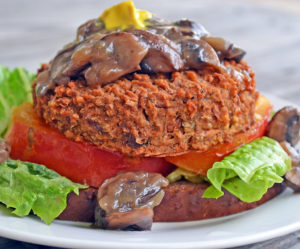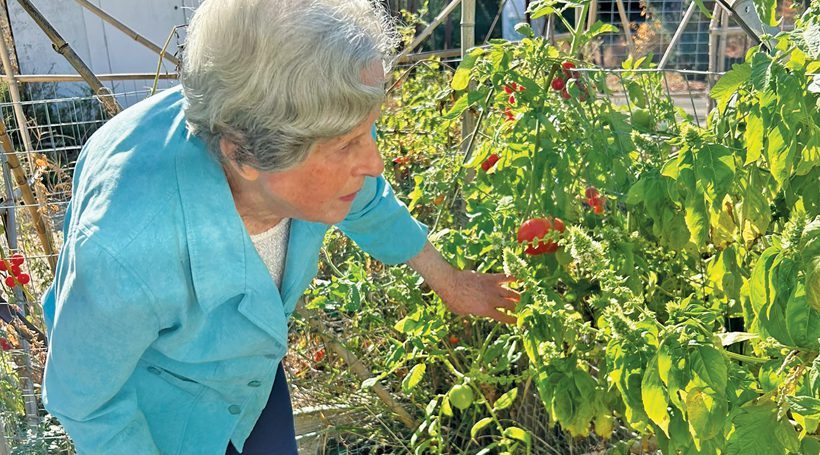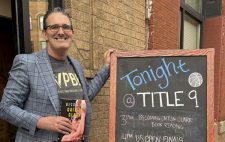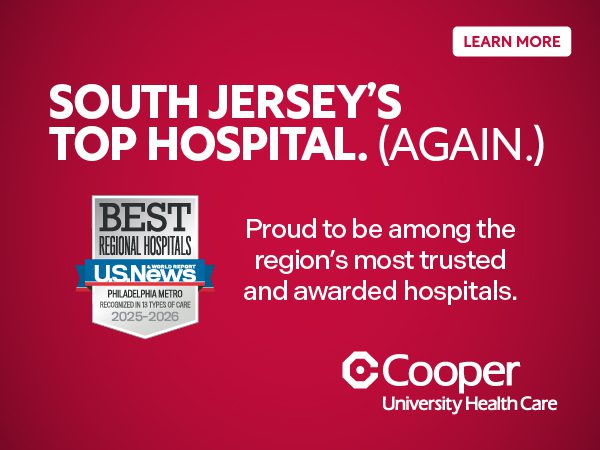When Freya Dinshah joined the English Vegan Society as a resident of Epsom, England, the society wasn’t even 20 years old.
When she traveled to America to meet her future husband for the first time – they had been corresponding with each other for about a year (they were both vegans) – her future husband had started the American Vegan Society a few months earlier.
When she published her cookbook “The Vegan Kitchen” in 1965, it was the first American book to use the word “vegan” in the title.
But today, Dinshah is about to start her 25th – and final – year as president of the American Vegan Society (AVS), which will also celebrate 65 years. And thanks to the society’s work, there are now thousands of vegan restaurants across the country, countless vegan cookbooks and influencers online who routinely share strictly vegan recipes and lifestyle tips.
Dinshah has witnessed firsthand – and directly influenced – society’s vegan journey, where scores of people now consider the way of eating simply a way of life.
Q: Why did you become a vegan?
I grew up in a vegetarian family and generally took my own packed lunch to school or would decide to eat the school lunches but would take a container of grated cheese to eat instead of the meat. Then someone at the lunch table said that cheese wasn’t really vegetarian because of the casing they put it in, it comes from the stomach of a calf. That was revolting news to hear, so I stopped eating cheese. That was the beginning of my trend towards veganism. Instead of the cheese, I would take some grated nuts to eat.
Q: What do you say to people who think vegans don’t get enough nutrients?
I look at the U.S. Department of Agriculture’s MyPlate, which has changed and developed over the years. One of the quarters used to be called the meat group, then it was called the meat and bean group, and now it’s called the protein group. Most people still have the opinion that if you’re going to get your protein, you need meat. But the U.S. Department of Agriculture says that Americans can get more of their protein from legumes, which is peas, beans and lentils.
Q: What is the American Vegan Society?
We’re a group of people who figure that we should not take any food from animals. We think that’s quite a practical thing to follow, but it’s pretty radical from the way most people eat. So a lot of what we do is make people familiar with veganism and strengthen their resolve to be vegan. We have a magazine, we’ve had meetings, conventions, and we’ve gathered and sold books about different aspects of veganism.
Q: How did your headquarters end up in South Jersey?
Being in New Jersey, especially South Jersey, is great because we’ve got this farming industry all around us. Apple trees, peach trees, all kinds of vegetables and blueberries – all growing around us. But why New Jersey? My father-in-law came from Bombay, India, and he settled in New Jersey. He got land in Franklin Township, and our office building was his office and warehouse. Our house, which is also our educational center where people visit to experience vegan food and life, used to be his house.
Q: Is there a moment with AVS that you’re especially proud of?
We had to find a site for the World Vegetarian Congress, which was being hosted in the U.S. We decided every recipe was going to be vegan, though people could get cheese or eggs or milk on the side. We went to the University of Maine at Orono and talked to the food service dept. who we asked if they could feed us vegetarian meals. They wanted to be supplied with the menu and the recipes, batched to make 100 servings. So we had to cook a pretty large batch of our recipes and then do the math to see how much we would need to make 100 servings. After that, we published the recipes and marketed it to universities, camps, hospitals, places all across the country.
Q: Any other memorable projects?
I was participating in an after-school program and had a friend of mine come talk to the kids about the parts of plants we eat, and we prepared a snack for them. We did hummus with crackers and vegetables, then for dessert, persimmons and figs. They loved it. The lady who does the snacks said to me, “We should give the kids something more nutritious for their snacks.” And I said, “What if we asked the kids what vegetables they like and made a soup?” So the next week, we had them take turns washing and cutting the vegetables, and putting them in the soup. They ate it. They wanted it. Then their parents came to pick them up and could not believe their kids were eating vegetables. So then I would do a meal with them, which became cooking classes right up until Covid. Out of that, we have a children’s cookbook that I created with my daughter.
Q: How has being vegan changed over the years?
We used to shop at health food stores to get certain things, but you don’t have to find a health food store these days because there’s so much in the supermarket. One thing you can get is hummus. Years ago, hummus wasn’t readily available, but now it’s a common food that people put out on a buffet.
Q: What does the future hold for you and AVS?
I’ll be retiring from my official position with the American Vegan Society next year. We’re bringing in more people who will bring their own approaches and talents, which is all very good. I’m going to be working on our library, which is the books that have been published in the last 65 years that chronicle the development of veganism. It will be a reference library in our headquarters in Malaga, housing the books we’ve considered good enough to buy and sell to others. That includes books on the animal rights perspective as well as a lot of cookbooks, health books, philosophy and so on.
Q: Do you have any tips for people thinking about becoming vegan?
It certainly helps if you have a friend who’s interested in doing it as well. You can also meet people by joining local societies, like ours or the Vegetarian Society of South Jersey, they have restaurant outings and potlucks.
Q: Does AVS host any dinners?
In December, we’re having one at Atlantic Cape Community College, which has an Academy of Culinary Arts with a restaurant. When we first did dinners there, we filled up the dining room, so now we have dinners two nights in a row. We do that about three times a year.
Q: Can you ever see a world where everyone’s vegan?
Whether we want to or not, people are going to be pushed in that direction, out of necessity. People aren’t going to be able to eat as much meat as they have, it’s not environmentally sustainable. Right now, we’re cutting down the Amazon and other forests for grazing animals or producing the food we feed the animals. And that’s very wasteful. We just can’t do it.
Learn the secret to a killer veggie burger
This recipe is labor intensive, but the outstanding results are worth the effort. Try it when you have time to play in the kitchen!
These burgers are healthy, gluten-free, and freeze well. Freya usually makes a double recipe.
BEAN BURGERS
Yield: 24 burgers
1 lb pinto beans, dry
6 or 7 cups water (Add more hot water as needed to keep beans covered while cooking.)
2 Tbsp ground-seed mix: caraway, celery, fennel, fenugreek
4 tsp ground cumin
2 Tbsp mixed dried herbs
4 garlic cloves, optional
1 each carrot, beet, onion—cooked with beans, or baked for richer flavor
Cook beans in a covered pot until very soft (2 to 3 hours). Put beans into a strainer over a pot to drain, reserving cooking liquid to cook grains. Mash well-drained beans.
(Note: Burgers are firmer if beans NOT presoaked.)
1 cup steel-cut oats
2 cups bean liquid/water
Cook slowly in covered pot 30 minutes, until done.
1 cup millet
1 cup pineapple juice
2 cups bean liquid/water
Cook slowly in covered pot for about 20 minutes, until done. Add both pots of grains to beans; mix and mash.
3 Tbsp apple sauce
¼ cup shoyu soy sauce (omit for soy-free)
2 Tbsp sesame tahini
½ cup minced fresh sage
2 Tbsp dried tarragon
¼ cup lemon juice
Add to the bean pot and mix well. Leave overnight to cool and set. Measure with half-cup scoop onto oiled baking sheet; press and shape with fork. Bake at 375°F for 40 minutes, switching racks at 20 minutes.
MUSHROOM-ONION GRAVY
1 Tbsp oil
1 Tbsp soy sauce
2 cups sliced onions
2 cups sliced mushrooms
1 Tbsp starch (arrowroot, corn, potato starch, etc.)
Heat the oil and soy sauce in a pot.* When hot, add onions, then mushrooms. Cover the pot. Cook at medium, then low heat. The onions and mushrooms will release, and cook in, their juices.
When mushrooms and onions are tender, using a fine strainer, sprinkle in starch; stir, and turn off heat. Gravy will thicken more on standing.
*Using an appropriate-sized pot, rather than a frying pan, minimizes the amount of oil needed.













